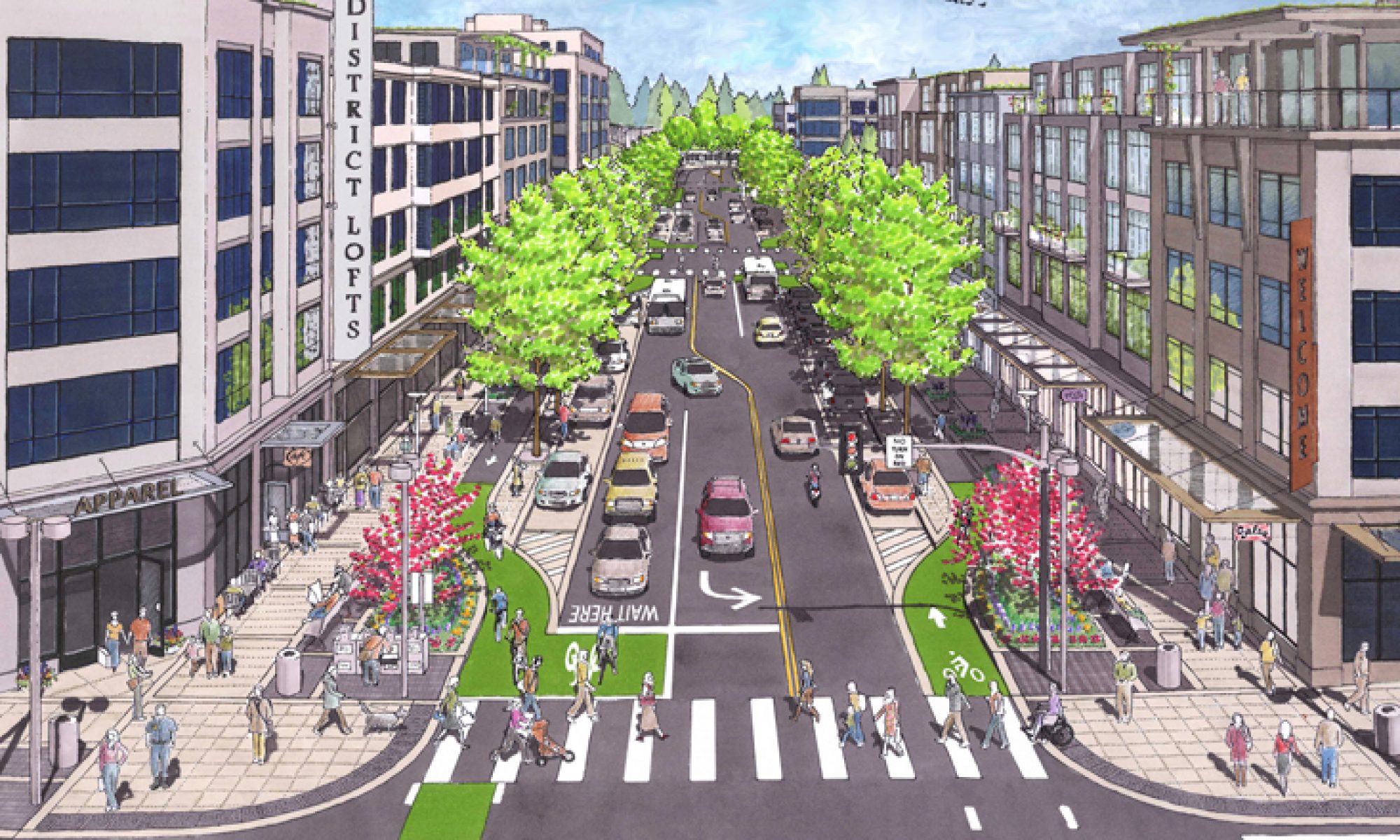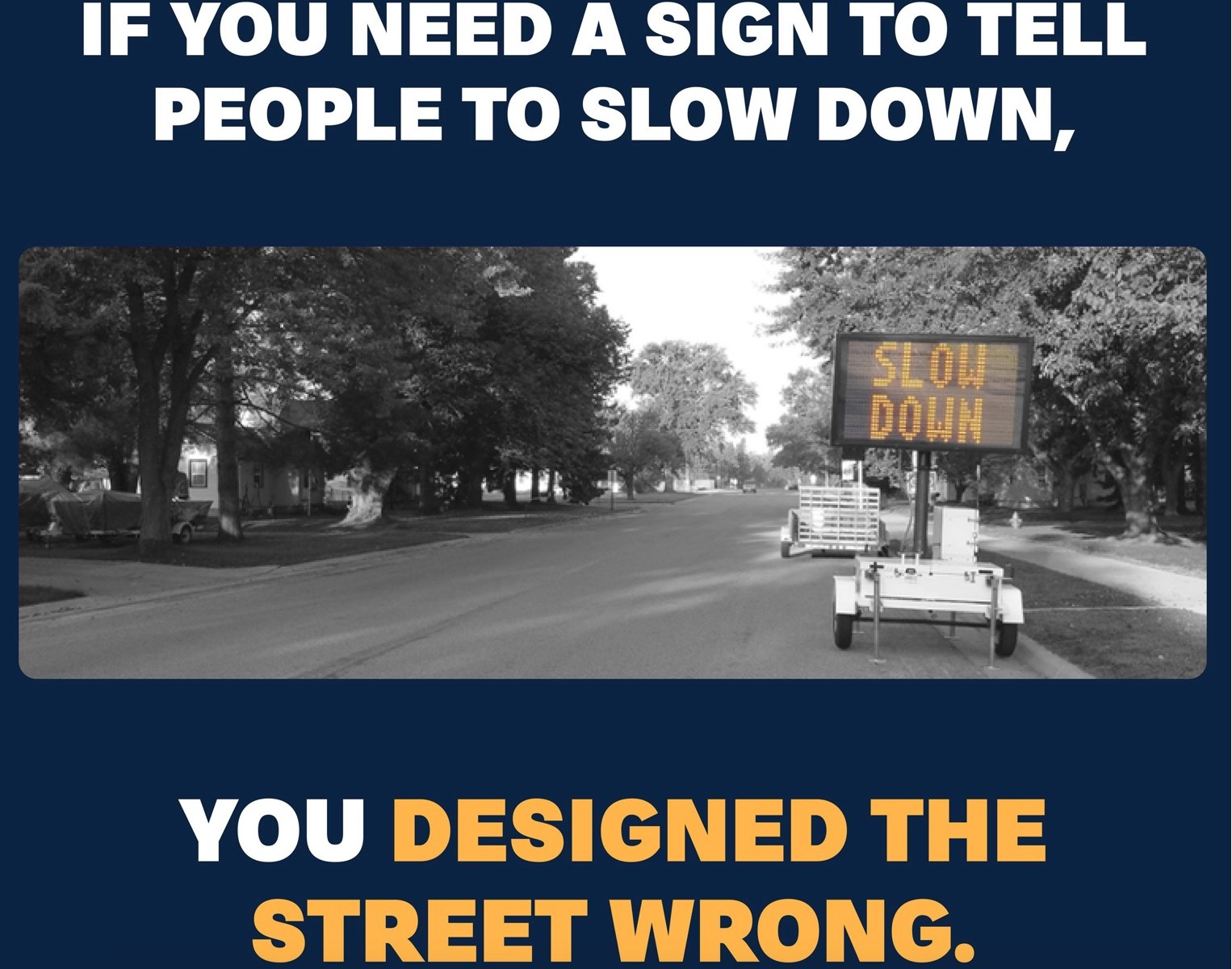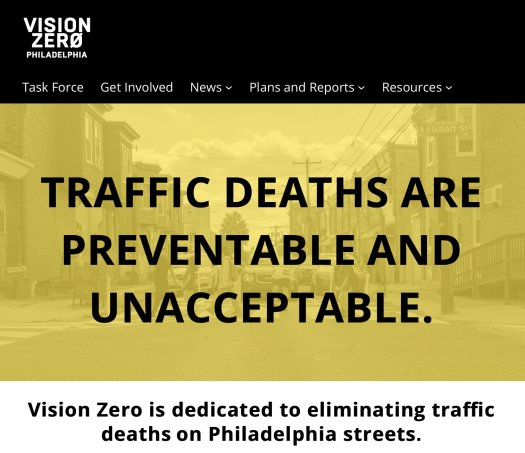FOOD FOR THOUGHT.
Lots of city residents lament in personal discussion, and especially on social media that we need more traffic enforcement to reduce speeding and other bad driver behaviors, as though that’s the best remedy for dangerous driving.
Enforcement isn’t the best way to effectively reduce speeding or other bad driver behaviors.
Too little enforcement can give drivers a sense that roads are theirs to do what they please any time, anywhere.
“Why do many of us drive dangerously on the roads? Because we think we can get away with it,” Jonathan Adkins, CEO of the Governors Highway Safety Association (GHSA), which tracks traffic fatalities across the country, told NPR earlier this year. “And guess what — we probably can right now in many places in the country.
A traffic ticket may not be effective in changing that driver’s behavior after the cop leaves the scene, but it can be a deterrent, and be a part of changing the culture in a city.
Evidence suggests that enforcement and road engineering ought to work together.
Police officers and their department heads have become reluctant to do traffic stops mainly for 2 reasons: to avoid accusations of racial bias, especially after the shooting of Michael Brown in Ferguson, Mo. in 2015, and because of fear for their own safety. Traffic Enforcement Dwindled in the Pandemic. In Many Places, It Hasn’t Come Back.
Traffic stops that involve equipment violations like a broken tail light, which are often a result of racial profiling are becoming more rare, while at the same time, a reduction of traffic stops for speeding and running signals and stop signs is also dropping.
So what do we do?
“Really long-term, design has to be the solution,” said Shawn Garcia, director of advocacy for the safe-streets organization Transportation Alternatives in New York. “Policing is not the direction we want to go in.”
I’m representing APCSC as part of a group of advocates working for legalization of speed cameras to be legalized in NJ.

The objections that stymie the legislation of speed cameras in NJ and Texas come from civil libertarians who oppose the surveillance, even though studies in the U.S. and overseas show that speed cameras are effective at reducing speeds and injuries, .
Legal mechanisms designed to keep streets safe are breaking down, while traffic deaths are rising. Is there a better way?
Impounding cars, and revoking licenses plus legalization of speed cameras among other strategies can be effective: A fatal crash shows us everything that’s wrong with traffic enforcement
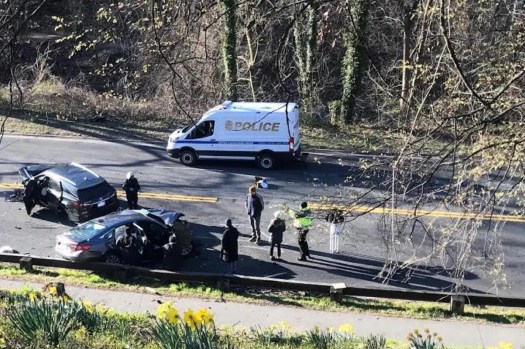
“New Jersey emerged as the state with the highest rate of pedestrian fatalities. New Jersey Tops Pedestrian Fatality List. Out of the 3,030 total traffic deaths recorded in the state during the study period, 916 were pedestrians. This means that 30.23% of all traffic fatalities in New Jersey involved pedestrians, the highest percentage in the nation.”
APCSC has been advocating for a Vision Zero Policy in Asbury Park…but this requires a commitment to implement street and road modifications to change driver behavior, and make it safe for walkers and rollers.
“Lots of cities have appointed staff to oversee their Vision Zero efforts, but who don’t implement physical safety measures, instead sit at a desk creating power point presentations. Here Is What Vision Zero Should Really Look Like.
Generally, city professionals are reduced to working on bike lanes, preparing plans with lots of public outreach (marketing), and applying for grants. When we see this, we are seeing an unserious approach. Does this seem familiar in Asbury Park?
Safety on Asbury Park streets and roads shouldn’t be the domain of one person; or the police. It needs to be part of the culture. Safety first. Safety second. Safety, safety, safety.
If we’re depending upon enforcement, signs, and PSAs to change driver behavior we’re doing it wrong.
Our streets can be reconfigured, often starting with just paint and pilot projects. When roads are paved the street or road can be modified with curb extensions so people walking have less distance to cross and to slow drivers. Raised crosswalks, mini-roundabouts, protected bike infrastructure are proven effective countermeasures to slow driver speeds.
Signs and PSAs are not effective, and are a lazy way for cities to imply that they are doing something about driver behavior.
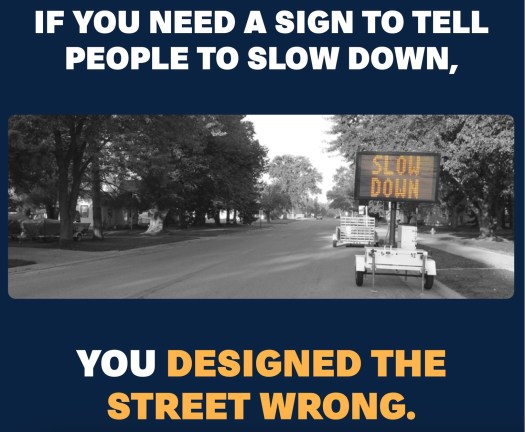
I’ll leave you with a quote:
We ask everyone outside the car to be safe so that drivers can be dangerous.
Onward.
Polli Schildge, Editor apcompletestreets.org
